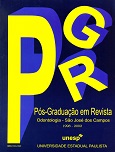Avaliação da resistência da união e infiltração entre amálgama/resina composta em função de diferentes tratamentos superficiais
DOI:
https://doi.org/10.14295/bds.1999.v2i2.64Abstract
O objetivo deste trabalho foi avaliar a influência de diferentes tratamentos superficiais e sistemas adesivos na resistência de união amálgama/resina composta, bem como na microinfiltração interfacial. Foram realizados quarenta corpos-de-prova cilíndricos com 4mm de comprimento e 4mm de diâmetro, utilizando a liga Permite C (SDI); os corpos-de-prova foram armazenados por sete dias em água destilada a 370C e então divididos em grupos: Grupo I – superfície do amálgama abrasionada com ponta diamantada; Grupo II - superfície abrasionada com jato de óxido de alumínio. Esses grupos foram divididos em dois subgrupos: A - aplicação do sistema adesivo Prime & Bond 2.0 (Dentsply), B - aplicação do sistema adesivo Scothbond-Multi-Uso- Plus (3M).A seguir foi aplicada a resina composta Z100 ( 3M) sendo então obtidos quarenta corpos-de-prova cilíndricos com dimensões de 8mm x 4mm para a avaliação da resistência de união. Para avaliar a microinfiltração na interface amálgama/resina composta foram realizados vinte corpos-de-prova retangulares. Após ciclagem térmica, as primeiras quarenta amostras foram submetidas ao ensaio de cisalhamento em uma máquina de teste universal (Instron 4301) e a resistência média de união entre amálgama/resina composta obtida ficou entre 8.74 e 16.82 Mpa , não apresentando diferença significante entre os diferentes grupos estudados. A microinfiltração na interface entre os materiais restauradores foi avaliada in vitro através do ensaio de líquido penetrante. A análise qualitativa das amostras permitiu constatar a presença de infiltração na interface em todos os grupos independente do tipo de tratamento superficial e adesivo utilizados.
Downloads
Downloads
Published
How to Cite
Issue
Section
License
Brazilian Dental Science uses the Creative Commons (CC-BY 4.0) license, thus preserving the integrity of articles in an open access environment. The journal allows the author to retain publishing rights without restrictions.
=================




























